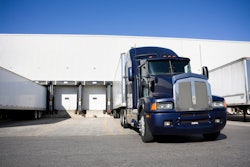A COVID vaccine mandate, which entered the Federal Register Nov. 5, will require more than 730,000 employees in the trucking industry – including drivers – to be vaccinated against the coronavirus no later than Jan. 4, 2022 or undergo weekly testing and mask up. Thousands of drivers have threatened to walk away from their trucks rather than take the jab.
Meanwhile, near-daily record numbers of container ships are staging off shore at ports around the U.S., and soaring spot market rates and logistical hurdles aren't drawing inbound drivers to those very same ports. None of that sounds like ingredients for a very merry Christmas, but those are the realities heading into the season.
This has been a challenging year for shippers as the number of loads to available drivers hovers at about a 6:1 ratio and skyrockets the closer you get to a port. Chris Preboth, vice president of Shipwell Logistics and a 15 year veteran of C.H. Robinson, said he expects the rest of 2021 to look a lot like it does now, "in fact, it's probably going to get a little worse."
[Related: Port confidence still wanes despite driver bonuses, new container fees]
"We start to think about peak season and normal peak season where, if you look at just the history of trends over the last four or five years, that long haul load, the truck ratio starts to increase, especially out of the port areas and, specifically, LA and Long Beach," he said.
President Joe Biden in mid-October announced that the Port of Los Angeles would move to 24/7 operations by adding a night shift. Additionally, Biden announced that major movers of goods Walmart, FedEx, and UPS would also add shifts to clear up the backlog at the ports. Samsung, Home Depot and Target will also increase work during off-peak hours, according to the announcement.
There's currently a queue of more than five dozen freighters floating off California's primary ports waiting to be unloaded and wiping out that backlog will be neither an easy nor a quick process.










